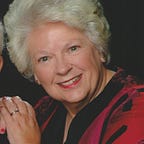Murdered and Missing Indigenous Women and Children
While searching for news about Native American communities, I found an insightful website: Native America Today. One article that caught my attention was “Standing for Justice for Murdered and Missing Indigenous People” by the staff of NAT. This piece sheds light on the alarming epidemic of violence that has plagued Indigenous communities for years.
The Sovereign Bodies Institute reports that 63% of Indigenous people in California have experienced domestic or intimate partner violence. Disturbingly, only 153 out of 560 cases of missing and murdered Indigenous women and girls were recorded in local enforcement records. This lack of comprehensive data is not unique to California; states like Florida also have inadequate tracking systems for missing Indigenous women and girls, often leaving this responsibility to tribal nations.
National statistics reveal a staggering truth: the murder rate for Native American women is ten times higher than that for other women in the United States. This stark reality underscores the urgent need for action. Ignoring this crisis is not an option, despite Native Americans comprising only 2% of the U.S. population.
Addressing this problem is complex. Only 22% of Native Americans live on reservations under tribal governance, where cultural customs, such as not speaking of the dead, complicate data collection and awareness efforts. Additionally, poverty and substance abuse on reservations exacerbate violence.
However, hope is on the horizon. Many Native American groups are organizing efforts to record and locate missing individuals. For instance, the San Manuel Band of Mission Indians recently hosted its second annual 5K walk at California State University, raising over $15,000 for this cause. These funds are crucial for documenting cases and collaborating with other organizations to find solutions.
This information is new to me. Reading Amanda Peters’ novel “The Berry Pickers,” which fictionalizes the loss felt by families of missing children, deepened my interest in the issue. While violence affects many, Native American communities have historically received less attention. It’s time to correct this oversight.
By raising awareness and supporting initiatives that address these injustices, we can contribute to a future where Native American women and girls are no longer disproportionately affected by violence.
